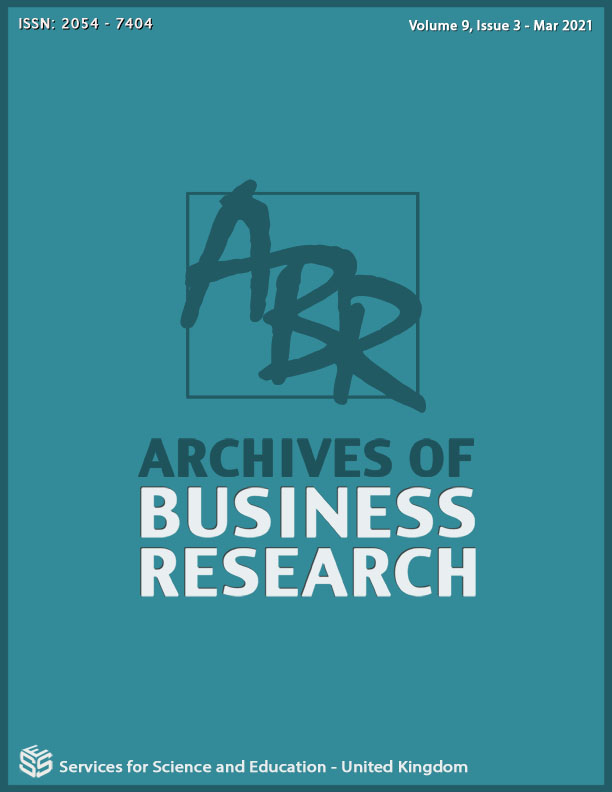The Improvement of Suroboyo Bus Public Transportation Services Based on the Bus Golek Application Innovation in the City of Surabaya Indonesia
DOI:
https://doi.org/10.14738/abr.93.9923Keywords:
Innovation, GolekBis application, Public Transportation ServiceAbstract
One of the government's duties to fulfill the need for safe, comfortable and affordable public transportation services so as to facilitate the mobilization of the community in carrying out its activities is the Golek Bus Application Service as an innovation in improving public transportation services for users of the Suroboyo Bus service. The purpose of this research is to find out and describe the application innovation Gobis in improving public transportation services Suroboyo Bus in the city of Surabaya by using qualitative research methods with data collection techniques observation, interviews, and documentation. Data analysis techniques are data collection, data condensation, data presentation, and drawing conclusions. The results show that the five attributes of innovation are as follows: 1) Relative advantage in innovation has been carried out optimally because it has advantages over previous innovations, 2) Conformity in the innovation of gobis applications in suroboyo bus services is optimal, but there are still some that need improvement due to the lack of additional routes for lines that match the corridors in the gobis application, 3) The complexity of this new innovation is also good but there are still shortcomings related to the arrival and departure schedules of Suroboyo Bus.
References
2. https//SurabayaKota.bps.go.id. In ,2019.
3. https://kabar24. bisnis.com/read/20160204/78/516013/atasi-macet-ini-lima-strategipemkot -SurabayaTitle. In 2020.
4. Nathaniel ,F. and N. Najid ,2020.Pengaruh Electronic Road Pricing Terhadap Kondisi Lalu Lintas Ruas Jalan Kuningan [The Effect of Electronic Road Pricing on Traffic Conditions on Jalan Kuningan]. JMTS J Mitra Tek Sipil,3(4):969.
5. Di Pasquale ,G., Santos AS Dos, A.G. Leal and M. Tozzi ,2016.Innovative Public Transport in Europe, Asia and Latin America: A Survey of Recent Implementations. Transp Res Procedia [Internet],14:3284–93.
6. Moenir, 2010. Manajemen Pelayanan Umum di Indonesia [Public Service Management inIndonesia] In Jakarta: PT. Bumi Aksara.
7. Pasolong, H. , 2019. Teori Administrasi Publik [Public Administration Theory]. In Bandung: Alfabeta .
8. Hiplunudin, A. ,2017. Kebijakan, Birokrasi, dan Pelayanan Publik [Policy, Bureaucracy, and Public Services]. In Yogyakarta: Calpulis. Title.
9. Peraturan Menteri Pendayagunaan Aparatur Negara ,2014. [Regulation of the Minister of Administrative Reform]. Nomor 15 Tahun 2014.
10. Peraturan Menteri Dalam Negeri Nomor 4 Tahun,2006.Tentang Peldoman Penyelenggaraan Terpadu [Regulation of the Minister of Home Affairs Number 4 of 2006 concerning Integrated Implementation Guidelines]. Vol. 25, Chest. 2006. 1–14 p.
11. Syarifuddin, H., U. Muhammadiyah, S. Rappang and M. Ikbal,2020.Optimalisasi Pelayanan Publik Melalui Pemanfaatan Teknologi [Optimization of Public Services through the Use of Technology],(October).
12. Tanye, H.A. ,2016. Perceived Attributes of Innovation: Perceived Security as an Additional Attribute to Roger’s Diffusion of Innovation Theory. Vol. 3, International Journal of Multicultural and Multireligious Understanding, 6.
13. Windrum ,P. ,2008.Innovation and entrepreneurship in public services: Entrepreneurship, Creativity and Management. Innov Public Sect Serv Entrep Creat Manag,3–20.
14. Muluk ,K. , 2008. Knowledge Management: Kunci Sukses Inovasi Pemerintah Daerah [The Key to the Success of Local Government Innovation]. In Malang: Bayumedia.
15. Lewrick ,M., M. Omar, R.L. Williams, N.C. Tjandra and Z.C.Lee,2015. Radical and incremental innovation effectiveness in relation to market orientation in the retail industry. In: Successful technological integration for competitive advantage in retail settings". IGI Global.
16. Vagnani, G. and L. Volpe ,2017. Innovation attributes and managers’ decisions about the adoption of innovations in organizations: A meta-analytical review. Vol. 1, International Journal of Innovation Studies. p., 107–33.
17. Nugraha ,J.T. ,2018.E-Government Dan Pelayanan Publik (Studi Tentang Elemen Sukses Pengembangan E-Government Di Pemerintah Kabupaten Sleman) [E-Government and Public Services (Study of Successful Elements of E-Government Development in Sleman Regency Government]. Jurnal Komunikasi Dan Kajian Media,2(1):32–42.
18. Indrayani ,E., 2020.E-Government : Konsep, Implementasi dan Perkembangannya di Indonesia [E-Government: Concept, Implementation and Development in Indonesia]. Lembaga Pendidikan dan Pelatihan Balai Insan cendekia. LPP Balai Insan Cendikia, 407.
19. Anwar ,M., A. Al, N. Hasnan and N. Bt ,2015.E-Government Contributions and Advantages : A review of Sultanate of Oman. Int J Sci Res Publ [Internet].;5(12):214–9.
20. Indrajit ,R.E. ,2016.Konsep dan Strategi Electronic Government. Electronic Government [Internet],84.
21. Miles, M.B., A.M.Huberman and J.dan Saldana,2014. Qualitative Data Analysis, A Methods Sourcebook, Edition 3. USA: Sage Publications. Edition 3. USA: Sage Publications,






